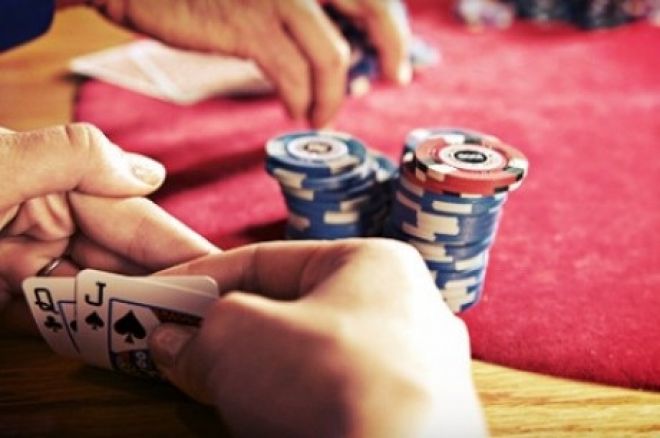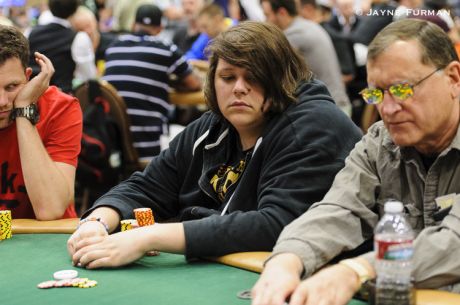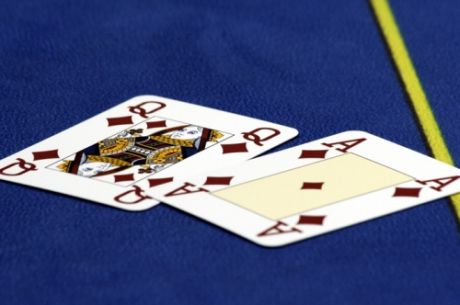They Are Called Bluff Catchers For a Reason

It has been said that aggressive poker is winning poker, but sometimes we have a tendency to overdo it. Recently, I’ve been reminded that sometimes I need to harness my own aggression in order to take advantage of my opponents’ aggression. The best way to do this is by becoming adept at bluff catching, a not-so-simple art.
Bluff catching is not something we can do if we are constantly betting with every hand in our range. Some of them are neither going to be good value betting hands (the upper part of our range) nor good bluffing hands (the lower part), but will fall somewhere in between.
In some situations, these are the hands that better serve as bluff catchers — and they are called that for a reason. Instead of letting our aggressive opponents off the hook by raising or betting with these hands, we should sometimes let them drive the action with their bluff-heavy range and “catch” them with our calls.
Here is a hand from fellow PokerNews contributor Andrew Brokos that reminded me of this concept.
Lesson from Thinking Poker
Andrew recently posted a hand from a live $5/$10 game on his Thinking Poker blog, one that began with the player under the gun (UTG) limping in with a call. UTG was a recreational player who was known to limp and call many raises preflop only to play “fit or fold” thereafter. Knowing this, a good aggressive player in the hijack seat (HJ) raised, and the action folded to Andrew sitting in the big blind (BB) with KxJx-offsuit.
Here he asked his readers what we would do in this spot, and I opted for a three-bet believing that HJ had a wide range. I figured he would occasionally call the reraise, but would not be able to continue to the river very often. While this is true, Andrew reminded us that our hand in fact dominates many of the hands that villain would fold to a three-bet, so letting him bluff with those hands instead of folding them may be more profitable. This approach also keeps our three-betting range from being too bluff-heavy.
Andrew also explained how KxJx-offsuit — traditionally one of those “trouble hands” in no-limit hold’em — does not make many great value hands or great bluffing hands postflop, but it does have some decent high-card value. This makes it a good bluff catching hand when we are facing an aggressive villain with a wide range.
One cool aspect I’ve realized about hands like this is that they can cause your opponent to value town himself when a “good barrel card” turns. After discussing this hand on Andrew’s blog, I decided to put the concept into practice in an online $100NL game and that is exactly what happened.
Putting It Into Practice
In the hand I watched an aggressive player open from late position much as he did every time it was folded around to him. Previously I had three-bet a couple of times from the BB and he’d folded. This had been the desired result when I had a hand like Ax2x-suited, but this time I picked up A♠J♥ and decided just to call the raise.
The flop came 10♠9♣4♠. Since I believed that the villain was on a wide range and was c-betting almost 100% of it, I decided to check-call with my two overs and backdoor straight and flush draws. The turn then brought the A♦ and villain barreled thinking that it was a scare card for my flop check-calling range. I called the turn bet, the river blank went check-check, and villain lost with Q♣7♣.
Obviously the turn was a good card for me here. Nonetheless, his flop bet and turn barrel were dollars I would not have gotten had I decided to be aggressive and three-bet preflop with my “trouble hand” preflop.
Conclusion
To win at poker, it is important to be aggressive, but it is even more important to use all the information available to you and adapt accordingly. Sometimes, fighting fire with fire is not the best policy. If you are up against players who you suspect will do a lot of bluffing, then consider letting them do so when you have a hand that can stand up to it.
Don’t bluff with your bluff catchers. Catch bluffs with them.
Get all the latest PokerNews updates on your social media outlets. Follow us on Twitter and find us on both Facebook and Google+!








